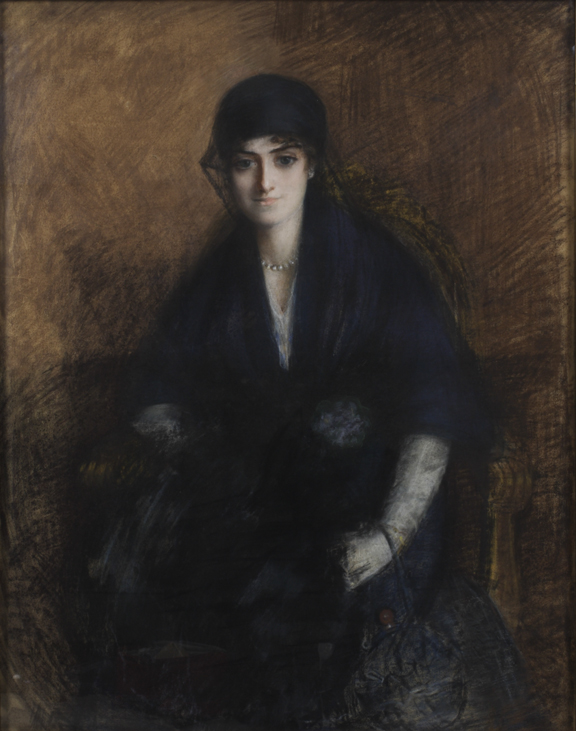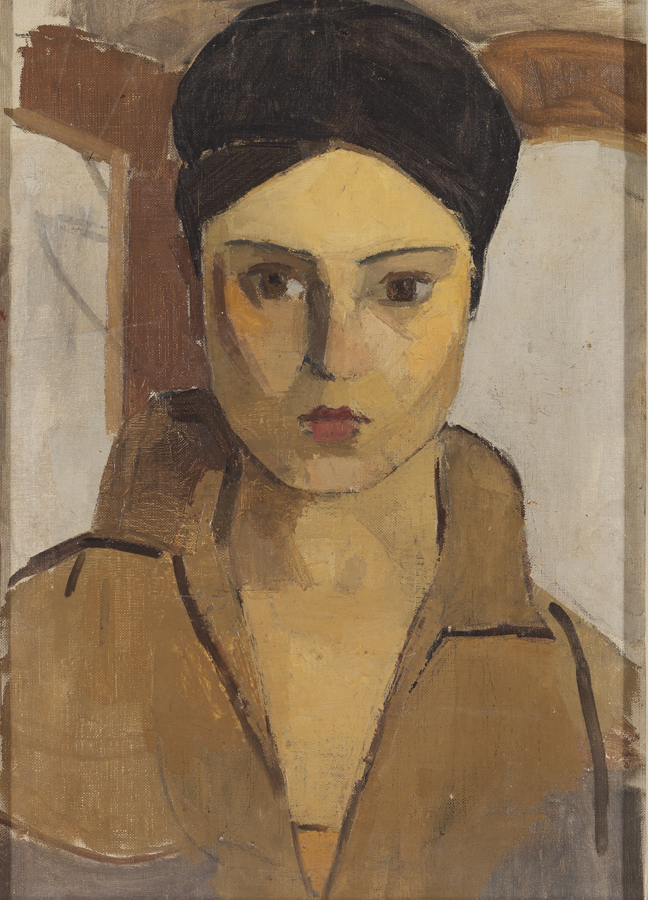Shows
“Dream and Reality: Modern and Contemporary Women Artists from Turkey,” Part One


This is part one of a two-part review on Istanbul Modern's "Dream and Reality." A link to the second half can be found at the bottom of this page, which will be posted later this week.
Even before eight artists asked to have their works removed to protest Istanbul Modern’s censorship of a commissioned work by Bubi Hayon, “Dream and Reality: Modern and Contemporary Women Artists from Turkey” was a troubled and flawed exhibition, despite its best intentions to showcase the important contributions of 74 female artists to the Turkish art scene over the last century.
Co-curated by Levent Çalıkoğlu, the museum’s chief curator, and three Istanbul academics—Fatmagül Berktay, Zeynep İnankur and Burcu Pelvanoğlu—the exhibition was intended to “[remind] us of the artists’ pioneering position in the history of art while aiming to render visible their reckoning with Turkey’s sociocultural dynamics and especially their critical position in contemporary art,” borrowing its title from a two-part 1891 romance novel by Fatma Aliye and Ahmet Midhat, Hayal ve Hakıkat (“Dream and Reality”). Aliye, Turkey’s first female novelist, who wrote the first part, “Dream,” telling the female character’s story, was credited on the original book’s cover only as “a woman,” whereas Ahmet Midhat, the man who penned the male account, “Reality,” was given full credit for his part. This makes the book a strange inspiration for a show that is meant to give new attention to “pioneering female artists the lives and productions about whom we know little and whose names are almost forgotten.” But perhaps the title was fitting after all, since such unintended implications and slights were rife throughout the realization of the show.
The first problem with “Dream and Reality” was its timing, as it opened during the week of the Istanbul Biennial in mid-September. Since Istanbul Modern is located just next door to the Antrepo warehouses, the site of the Biennial, it was easy to make comparisons between the two presentations, much to the detriment of “Dream and Reality.” Though the Biennial had its share of flaws, its overall appearance felt far more contemporary and generously designed, alloting of individual rooms to over 50 artists, who thus received solo presentations. The Istanbul Modern’s approach was a largely chronological, physically cramped sampling of 74 female artists, each of whom were often represented by just one artwork.
No matter how strong the pieces in “Dream and Reality” (and they varied widely), the show is an example of the disservice that large-scale surveys can do to artists’ practices, when curators prioritize historical comprehensiveness over effective visual presentation. Füsun Onur (b. 1938), for example, the only artist in both exhibitions, was given a modestly sized room at the Biennial, containing a conical white sculpture from 1968, an artist book of collaged materials from 2001 and Whisper (2010), a row of X-shaped wooden struts decreasing in height—which together portrayed her interest in abstraction and serial forms over her long career. At Istanbul Modern however, Onur was represented by a single untitled work from 1993 consisting of a chair with a heavy metal chain draped across the seat, on which rests a placard bearing her name. The latter gave the impression that Onur’s work is primarily didactic and concerned with the social repression of women—an unflatteringly reductive portrayal of a seminal artist’s oeuvre.
On three subsequent visits to the exhibition after the close of the Biennial, its specific flaws became more apparent—particularly in its layout, as well as its lack of any rigorous art-historical scholarship or social contextualization, despite the curators’ claims to “[offer] a new, alternative perspective on the sociocultural history of Turkey.”
Before entering the exhibition, there were several artworks in the lobby area around the staircase. Gülsün Karamustafa (b. 1946) collected and framed with golden fabric five humorous, kitsch tapestries—featuring scenes such as nuzzling tigers and a topless woman on a motorcycle in the American Southwest accompanied by a huge eagle and two biker dudes—for a piece called Postposition (1995). Also in the lobby was Nil Yalter’s (b. 1938) video Exile is a Hard Job (1983), of un-subtitled interviews with Turkish immigrants living illegally in Paris. How these pieces related to the chronological survey that followed was entirely unclear—particularly given that these two artists are influential and still very active practitioners, in Turkey and internationally. Perhaps it was a subtle compliment that their work was shown outside the context of their peers; or was it just an instance of flawed exhibition design?

Such confusing readings resulting from curatorial decisions continued with the first work at the entrance to the exhibition hall, Ayşe Erkmen’s video (in English, unsubtitled) Kahve/Coffee (2007), which depicts the critic and academic Fatih Özgüven reading the artist’s fortune from the sediment at the bottom of a coffee cup. Leaving aside the merits of the video itself and the fact that Erkmen’s historically important works are primarily sculptures, one wondered if curators considered how strange it was to begin a survey of the history of women artists in Turkey with a video of a man telling a woman’s fortune. If this was intended to be a humorous inversion of gender roles to start the exhibition, its other more obvious implication was to inadvertently affirm that women’s destiny is still dictated to them by men.
Within the cavernous exhibition hall, the pieces were arranged very approximately by the date of the artist’s birth. The oldest exhibited pieces were supposedly by Mihri Müşfik (1886–1954), the first woman to direct the School of Fine Arts for Girls, established in 1914. She is billed as among the first female painters in Turkey—although here she was represented by an undated pastel portrait of an unnamed seated woman, a surprising paucity of information about a work that is in the museum’s own collection. This was emblematic of the poor quality of the scholarship throughout the exhibition; three other significant early paintings among the first dozen in the show also being presented without dates.
If curators couldn’t manage to provide a bare minimum of information about the works, at least some of them were well executed. Nearby, one of Müşfik’s pupils, Hale Asaf (1905–38) was represented by a handsome self-portrait in blocky, flat swatches of pigment that shows more influence from Paul Cézanne than her Paris professor, Andre Lhote. Bedia Güleryüz’s (1903–91) undated self-portrait sketches and a small oil painting from 1955, nicely displayed in a vitrine, gave a sense of a private but inquiring woman.
Beginning in this opening section of early and mid-20th-century artists, there were several obviously anachronistic moments, which made it even harder to imagine what the artistic climate of early 20th-century was like for Turkish artists. The ceramic sculptor Füreya (1910–97) was represented by her miniature clay houses from 1980. Tiraje Dikmen (b. 1925), a surrealist painter who exhibited in Paris beginning in the 1950s and 1960s, had just one small canvas in the show, from 2002.
Most symptomatic of the lack of curatorial guidance was the inclusion, in the same first section, of the astoundingly racist bronze sculpture, Head of an Arab (1963) by Zerrin Bölükbaşı (1919–2010). Not only was the work created in the 1960s—long after the pieces that bracketed it—but its gross caricature of the racialized subject, a woman with an enormously distended skull and crudely inflated lips, is either evidence of an overly ardent adoption of 19th-century European Orientalist attitudes or some misguided homage to ancient statuary. Leaving the subject completely unaddressed in the wall-text and accompanying press materials—which referred to her sculptures of belly dancers (not on view), the influence of Henry Moore on her practice after a show of his work in Istanbul in 1971 (eight years after this piece), and the fact that the sculpture earned fourth place in a competition in Berlin—curators seemed blithely unaware of any problematic racial stereotyping or of their obligation to address it.
The second half of this review can be read here.







